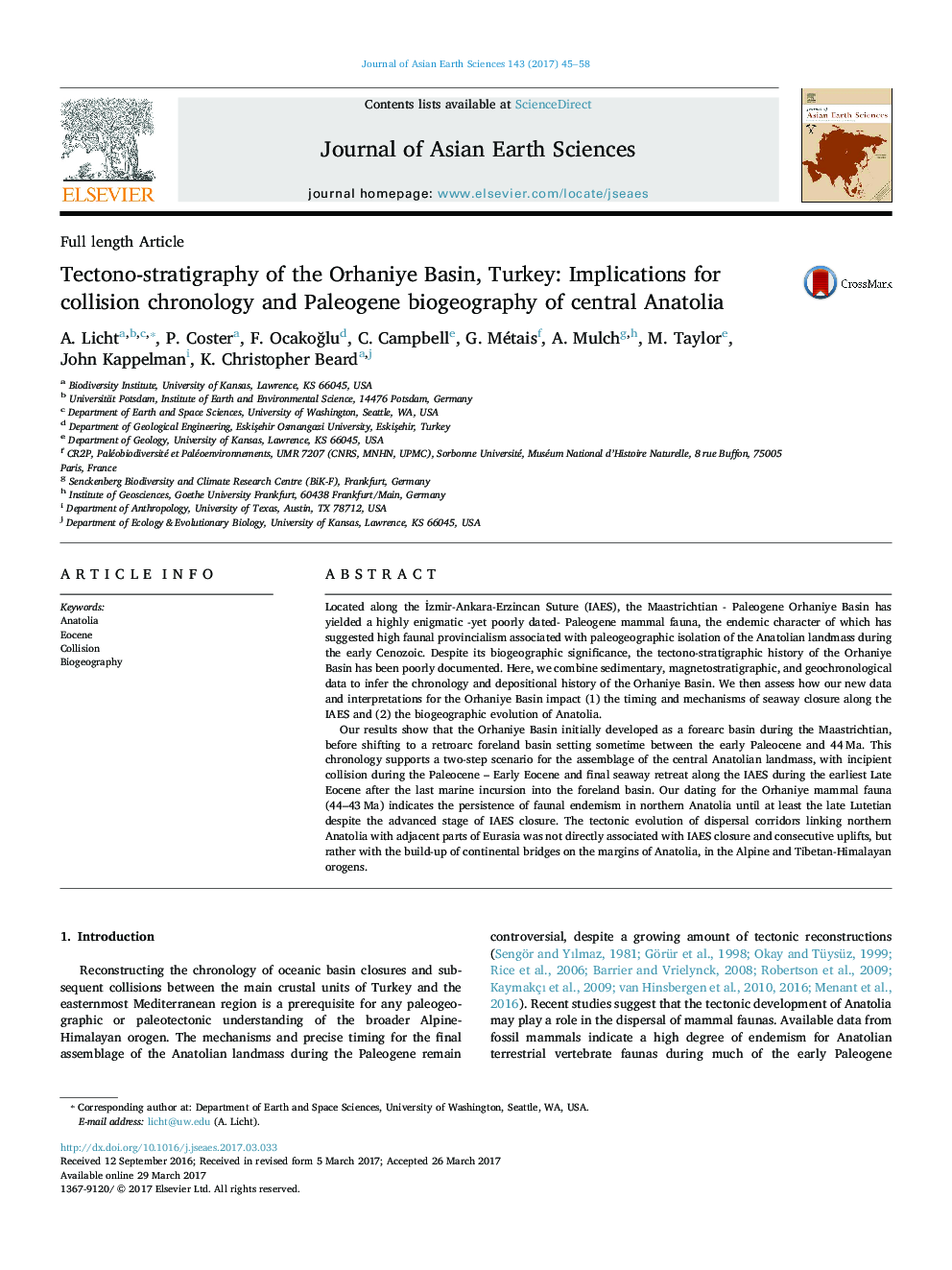| کد مقاله | کد نشریه | سال انتشار | مقاله انگلیسی | نسخه تمام متن |
|---|---|---|---|---|
| 5785999 | 1640329 | 2017 | 14 صفحه PDF | دانلود رایگان |

- We study the depositional history of the fossiliferous Orhaniye Basin, Anatolia.
- The Orhaniye Basin initially developed as a forearc basin during the Maastrichtian.
- The Orhaniye Basin evolved into a foreland basin between the Paleocene and 44Â Ma.
- Our dating indicates faunal endemism in Anatolia for most of the early Paleogene.
Located along the Ä°zmir-Ankara-Erzincan Suture (IAES), the Maastrichtian - Paleogene Orhaniye Basin has yielded a highly enigmatic -yet poorly dated- Paleogene mammal fauna, the endemic character of which has suggested high faunal provincialism associated with paleogeographic isolation of the Anatolian landmass during the early Cenozoic. Despite its biogeographic significance, the tectono-stratigraphic history of the Orhaniye Basin has been poorly documented. Here, we combine sedimentary, magnetostratigraphic, and geochronological data to infer the chronology and depositional history of the Orhaniye Basin. We then assess how our new data and interpretations for the Orhaniye Basin impact (1) the timing and mechanisms of seaway closure along the IAES and (2) the biogeographic evolution of Anatolia.Our results show that the Orhaniye Basin initially developed as a forearc basin during the Maastrichtian, before shifting to a retroarc foreland basin setting sometime between the early Paleocene and 44Â Ma. This chronology supports a two-step scenario for the assemblage of the central Anatolian landmass, with incipient collision during the Paleocene - Early Eocene and final seaway retreat along the IAES during the earliest Late Eocene after the last marine incursion into the foreland basin. Our dating for the Orhaniye mammal fauna (44-43Â Ma) indicates the persistence of faunal endemism in northern Anatolia until at least the late Lutetian despite the advanced stage of IAES closure. The tectonic evolution of dispersal corridors linking northern Anatolia with adjacent parts of Eurasia was not directly associated with IAES closure and consecutive uplifts, but rather with the build-up of continental bridges on the margins of Anatolia, in the Alpine and Tibetan-Himalayan orogens.
Journal: Journal of Asian Earth Sciences - Volume 143, 1 August 2017, Pages 45-58